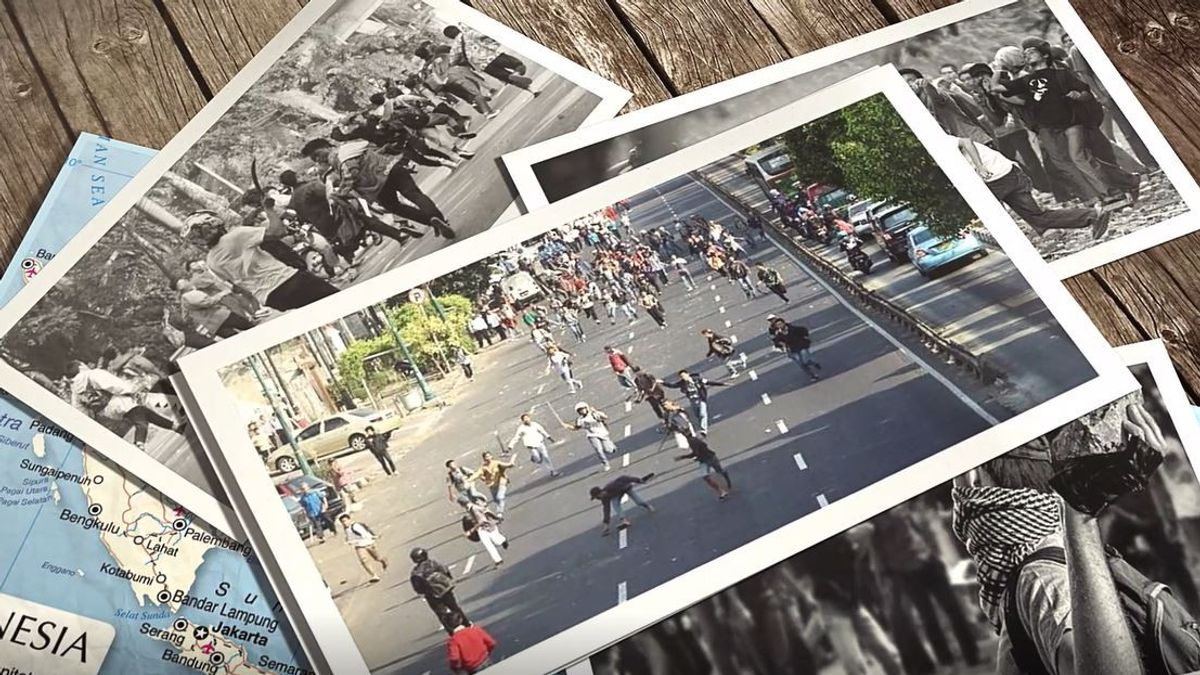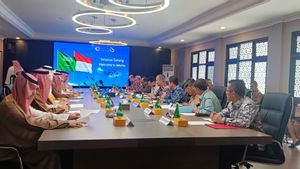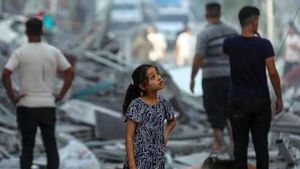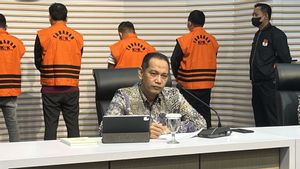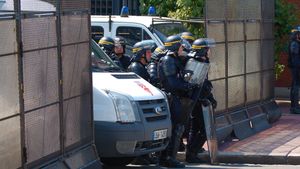JAKARTA - Last night, a brawl between two groups of people took place in Manggarai, South Jakarta. The traffic flow there was chaotic. Not only cars and motorbikes cannot cross the road, the train crossing schedule is also messy. A policeman became a victim of a stab in the back while trying to break up a brawl.
Launching Antara, Wednesday, October 30, Tebet Sub-district Head Dylan Airlangga made an inventory of a number of problems there. There are several factors that he considers the trigger for the easy brawl to occur there. This is because many potential young people have dropped out of school, either in junior high or high school, or because of cultural factors that have been passed down from 'abang-abangan' to the current generation.
The large number of young people who drop out of school there, makes them unemployed and have no productive activities. Their work has become odd. This is what makes young people self-actualize through social media. Teasing one another on social media becomes serious in social life. They were provoked and brawls ensued.
"On social media they mutually mutter and determine the time for a brawl, usually starting with two firecrackers burning it is a sign to play (fighting), usually like that," said Dyan.
The assumption is reinforced by the Manggarai brawl incident in September 2019, around 200-300 perpetrators of brawl in Manggarai are teenagers of productive age between 15 and 25 years of age who do not have skills and drop out of school.
Dylan claims to have held a number of programs to provide job training for potential unemployed youth. This program collaborates with the South Jakarta Manpower Office and the DKI Jakarta Provincial Manpower Office for free.
Apart from participating in the training, another effort is to channel teenagers who do not have these skills as contract workers of the DKI Jakarta Provincial Government such as the Public Infrastructure and Facilities Handling Officer (PPSU) or personnel at Bina Marga Water Resources and Forestry.
"So we try to distribute it there so they have activities," he said, saying that this program was only able to distribute 5 to 10 people.
Meanwhile, different steps were taken by the police to break down brawls in Manggarai. Tonight, the South Jakarta Metro Police will hold tumpeng cuts as a preventive measure to reconcile the two fighting groups of citizens and prevent Manggarai brawls from recurring.
"Cutting the tumpeng, praying, eating together and making a statement agreeing to make peace," said South Jakarta Police Chief Kombes Bastoni Purnama.
This event is at the same time the culmination of an agreement between the two parties who want to make peace and secure the residents in their respective territories. The agreement was obtained from the results of deliberations conducted between the post-election Muspika at the Manggarai Terminal Post. The meeting was chaired by the Head of the South Jakarta Metro Police, followed by the Tebet Police, Menteng Police, Tebet Sub-District Head, village heads and citizen representatives.
Meanwhile, he stated, the police were also looking for the perpetrators of the brawl to be held accountable, adding that the regional authorities had agreed to resolve the dispute so that the brawl would not happen continuously.
"The fighting is something that worsens the image of the residents of Meteng Tenggulun and Manggarai. This 2019 must be finished, clear," said Bastoni.
Last month, the National Narcotics Agency (BNN) will explore the possibility of a connection between drug cases and brawls that have occurred repeatedly in the Manggarai area and its surroundings. Because, it should be suspected that the brawl was only used as a diversion when there was a drug transaction process.
"Is the case of a fight in Jakarta with the motive of tricking goods into the village? Of course, BNN needs to look at the basis of that, whether there is research or not, we are investigating," added the Head of the Public Relations and Protocol Bureau of the Main Secretariat of BNN Kombes Pol Sulistyo Pudjo.
What is clear, according to Sulistyo, is that there is a special bond between drugs and brawls. Sulistyo said, in many findings, drugs were often consumed by the perpetrators of brawls as a diversion to logic and to increase their courage to face their opponents.
Apart from being 'guts dopping', several types of drugs that are analgesic are often abused by brawlers as painkillers. "Drugs with analgesic content can be synthetic or non-synthetic," said Sulistyo.
The English, Chinese, Japanese, Arabic, and French versions are automatically generated by the AI. So there may still be inaccuracies in translating, please always see Indonesian as our main language. (system supported by DigitalSiber.id)
